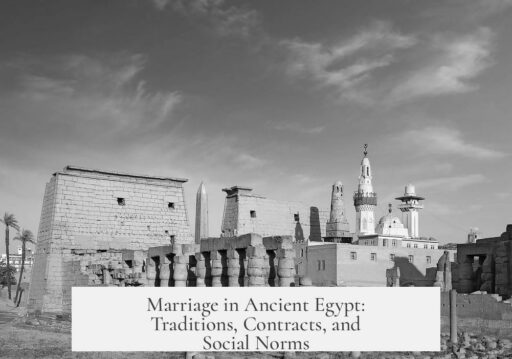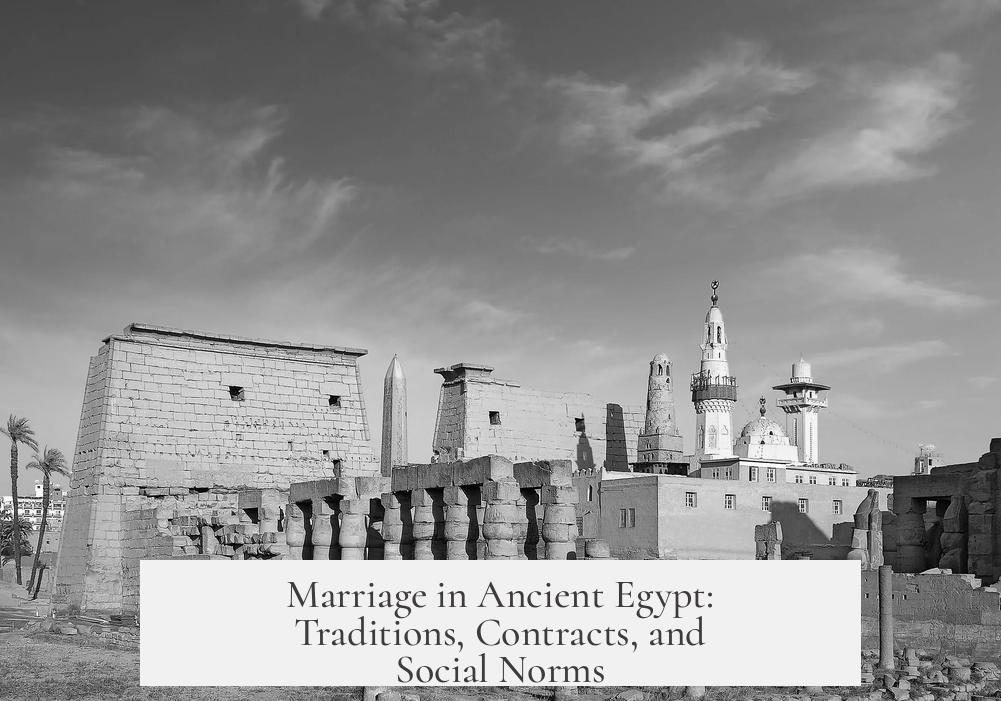Marriage in Ancient Egypt was a flexible and practical union, formed primarily through cohabitation without a formal ceremony or legal contract. Couples lived together to be considered married, and the institution focused more on personal and economic cooperation than on ritual formalities.
Unlike many modern cultures, Ancient Egyptians did not typically partake in a specific marriage ceremony. The iconic wedding customs familiar today—such as exchanges of rings or wedding cakes—were absent. A couple became married simply by moving in together. This practice applied equally to common people and elites. No official documentation or religious rite was generally required.
The language surrounding marriage also reflects this simplicity. There was no distinct word for marriage itself. Instead, relationships were often described as simply “being with” a spouse. The term hemet meaning “wife,” is well-documented, but there is no evidence of prenuptial agreements or formal contracts governing the union in early periods.
Some celebratory customs existed. Family and close friends might be invited to a dinner to mark the union. Invitations, flower arrangements (often roses or hyacinths), and festive gatherings appear in texts from the later Ptolemaic and Roman periods. Processions escorting a bride to her husband’s home are recorded among Hellenistic and Roman Egyptians but are not clearly evidenced in native Egyptian tradition.
After marriage, women usually moved into the man’s household. However, cases existed where men moved to their wife’s residence, though these were less common.
Marriage contracts are a later development, mostly appearing during the Late Period and among wealthy or politically influential families. These contracts could formalize economic and inheritance arrangements. Lower classes rarely used contracts, and even elites might draft them years after starting their family, indicating contracts were not a strict prerequisite.
Hellenistic and Roman influences introduced more institutional marriage concepts, but native Egyptian customs persisted. Women often played active roles in arranging their marriages. Premarital sexual relationships were recognized and accepted in many cases, which contrasts with stricter later Western norms.
Marriages usually occurred within local communities, so spouses typically knew each other well before uniting. Parental involvement existed but did not fully dictate choices. Some young women eloped despite parental disapproval, especially if the suitor was considered unsuitable socially or economically. Economic concerns such as loss of household income motivated some objections.
The social elite often practiced endogamy, marrying relatives including siblings and cousins. Royal families sometimes married siblings to maintain bloodlines. Marriages to a deceased spouse’s relative were common to preserve family connections and property.
First marriages generally occurred in the teenage years for women and slightly later for men, with ages ranging from early teens for women to mid-twenties for men. Exceptions included older women marrying in their fifties, though this was rare. Women’s sexual maturity marked by menstruation often indicated readiness for marriage, but premarital sexual activity was also documented. Men typically had more premarital sexual experience, especially among urban elites.
The ideal of marriage mirrored a sibling relationship, emphasizing mutual affection and companionship. Egyptian art and literature illustrate affectionate couples holding hands, embracing, and supporting each other. Wisdom literature advised husbands to treat wives kindly, with gifts and respect, while expecting loyalty in return. Happiness and lifelong partnership were cultural goals.
Marriage and family were central to Egyptian life goals. Children provided economic support and ensured continuation of the family line. Egyptians understood contraception and practiced limited birth control, though infanticide was rare. Medical and magical texts show significant attention given to sexual health and pleasure.
Procreation held symbolic and spiritual significance, linking to beliefs about rebirth and the afterlife. Texts express hopes of spouses reuniting and continuing companionship after death.
| Aspect | Description |
|---|---|
| Marriage Formation | Cohabitation without formal ceremony or contract |
| Celebrations | Family dinners, flower gifts, and festive invitations especially during Ptolemaic/Roman periods |
| Legal Contracts | Mostly late, rare, and used by elites; not required for marriage validity |
| Family Role | Parents involved but children had some choice; elopements occurred |
| Social Practices | Endogamous among elites; common cousin and sibling marriages |
| Age at Marriage | Women teens, men late teens to mid-twenties; variations existed |
| Emotional Aspects | Companionship likened to brother-sister bond; affection and mutual support encouraged |
| Economic & Social Function | Marriage ensured household labor, old age support, family continuation |
| Spiritual Dimension | Procreation linked to rebirth and afterlife reunion |
Property rights were notably balanced. Each spouse retained ownership of pre-marriage property. Assets acquired during the marriage were shared. Children typically traced lineage matrilineally, granting security within the mother’s family. Legitimacy was less rigidly enforced; children born outside marriage did not automatically have lower status, except those from adultery who were excluded from inheritance.
- Marriage based on cohabitation, no formal ceremony initially.
- Celebratory meals and social recognition common, especially in later periods.
- Marriage contracts rare and primarily elite phenomena.
- Parents involved, but individual choice and elopements present.
- Endogamy common; royal families often married siblings.
- Typical marriage ages: women teens, men in 20s, with exceptions.
- Marriage ideal included affection, companionship, mutual care.
- Marriage and children vital for social, economic, and spiritual life.
- Property rights more equal than in many ancient cultures.
- Procreation linked to beliefs about rebirth and afterlife unity.
What Would Marriage Be Like in Ancient Egypt?
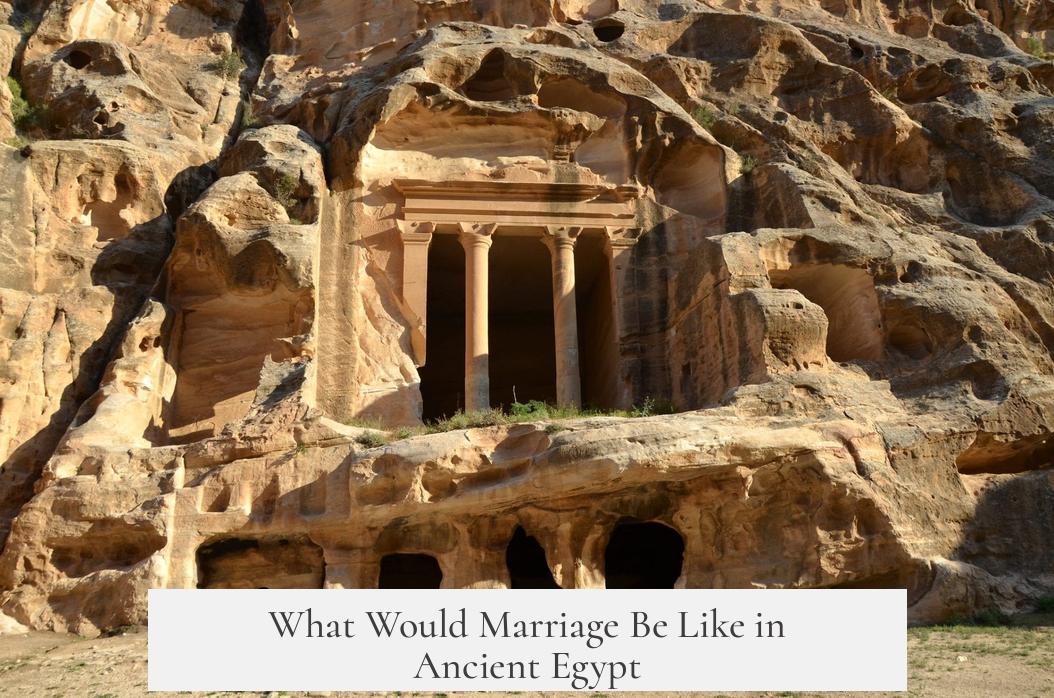
If we jump back to Ancient Egypt, marriage is not what we think it is today. No white dresses, no big church ceremonies, no wedding cakes—just simple cohabitation. Yes, you read that right. Marrying in Ancient Egypt mostly meant living together and calling it a day. Imagine that! But let’s dive deeper into what that really entailed.
Forget what Western wedding traditions tell you—holding hands, exchanging rings, or making grand vows are relatively modern ideas. Marriage in Ancient Egypt had its own unique style woven into daily life and culture, often blending practical concerns with emotional bonds. Ready to explore this fascinating topic? Let’s go!
Marriage: No Formal Ceremony, Just Life Together
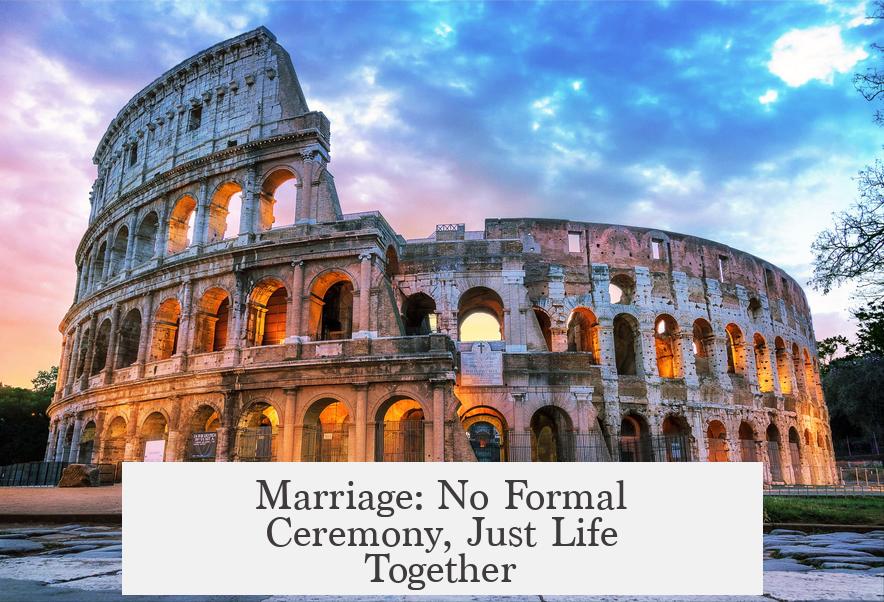
Surprisingly, in Dynastic Egypt, there was no official ceremony or ritual for marriage. A man and woman living together was enough to be considered married. This casual approach might sound shocking to us now, but in many ways, it was practical.
The Egyptian word for “wife” was hemet, but there was no specific word for marriage itself. Instead, being married often just meant “being with” someone.
This hints at a society where marriage wasn’t about legal paperwork, contracts, or religious obligations—at least not initially. The bond was social and personal, built on mutual agreement rather than official decree.
Celebrations, Parties, and Traditions—But No Vows
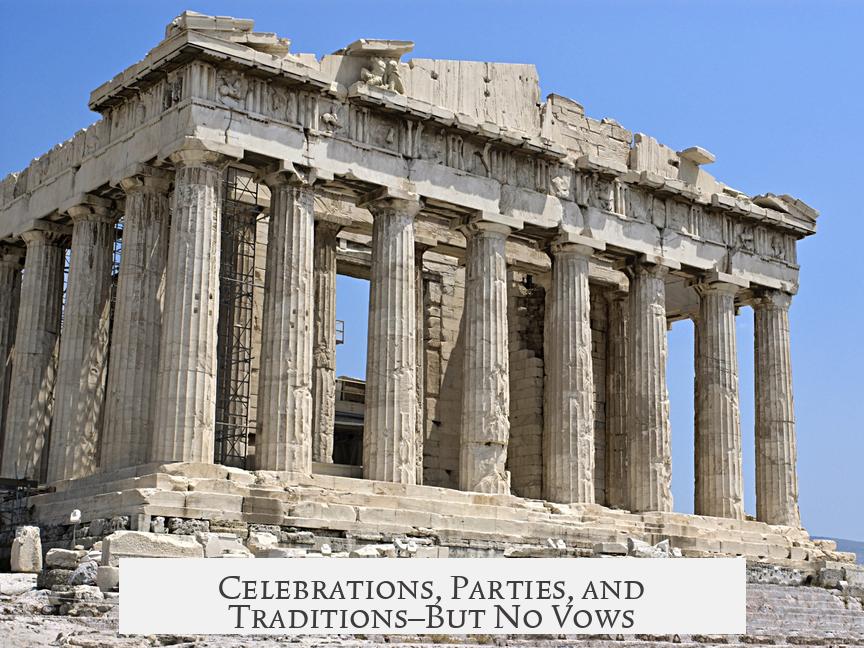
Okay, no ceremony doesn’t mean no celebration. Ancient Egyptians threw parties to mark moving in together. Letters from the Ptolemaic and Roman periods describe such events complete with dinner, guests, and lots of flowers—usually hyacinths and roses. Sounds almost familiar, doesn’t it?
In the Hellenistic and Roman-influenced eras, processions honoring the bride moving to her husband’s house became common. But within native Egyptian tradition, such rituals are missing from records.
Generally, the bride would enter the groom’s household, although men occasionally lived with their wives. The party atmosphere suggests marriage was still an important social milestone.
Marriage Contracts: A Later, Elite Development
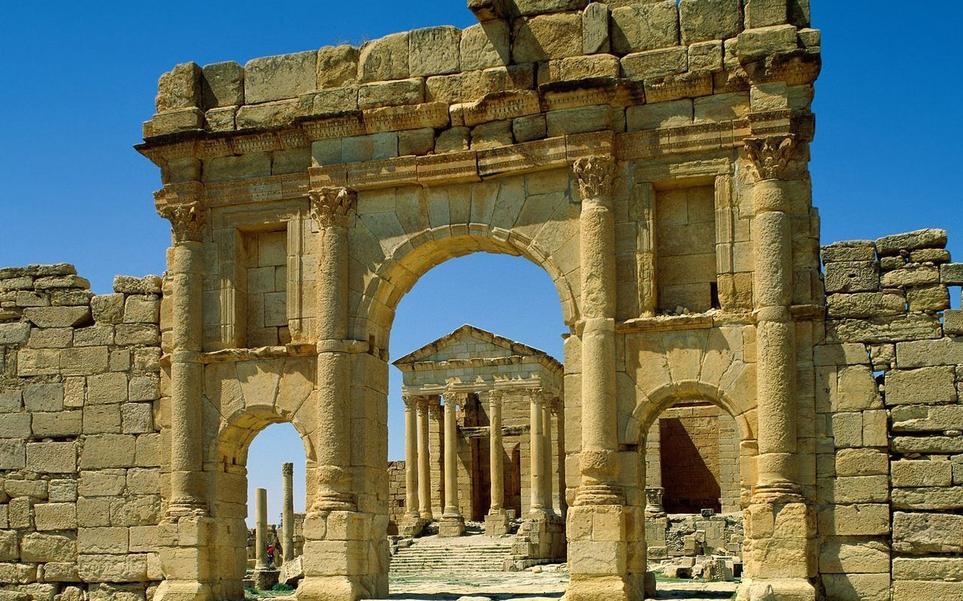
Despite the casual beginnings, marriage contracts appeared much later during the Late Period. Even then, they were optional and often drafted after years of living together and having children. For most people, such formalities were unnecessary.
Hellenistic and Roman settlers brought their own marriage customs to Egypt, mixing institutionalized marriage with local Egyptian attitudes. The upper classes often formalized marriages—for political alliances, economic clout, and showing off status.
Family Matters: Choice, Parental Input, and Even Elopement
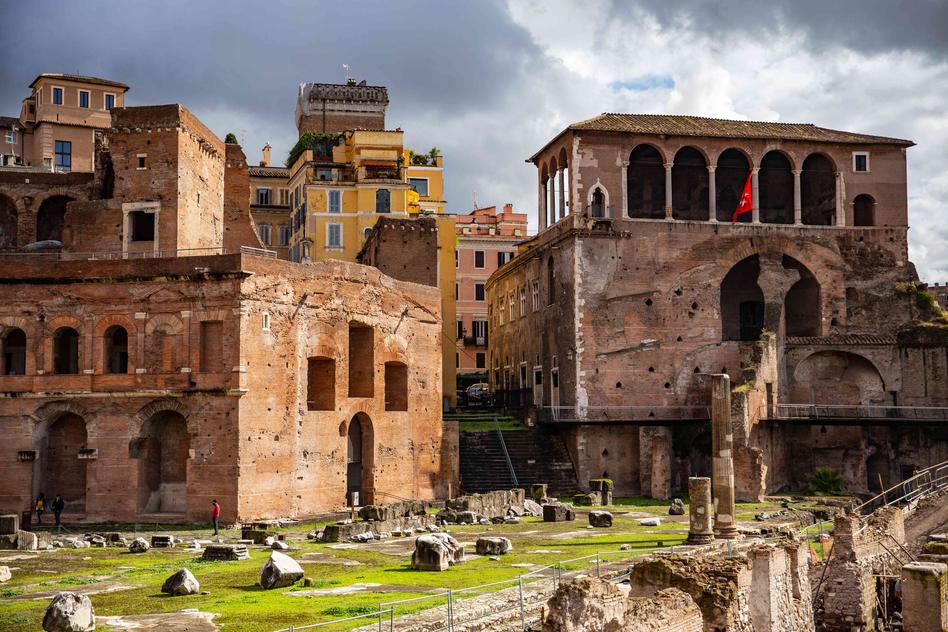
Marriage wasn’t just a private contract between two people—it involved family. Most commoners probably chose partners they knew well since their spouse came from their own community.
Parents could influence their children’s marriages, especially daughters’. However, evidence exists of children running off with partners against parental wishes, highlighting personal choice over family pressures.
Parental disapproval often hinged on social status. Parents feared unions that would harm familial reputation or financial stability. Losing a working daughter hurt family income, adding an economic layer to marriage decisions.
Marriage Across Social Layers: Royal Eccentricities and Common Norms

The elite had some weird customs by today’s standards—royal families often practiced sibling marriage to keep power within the family. Cousins, uncles, and half-siblings marrying was not unusual, even common among regular Egyptians.
It also happened that a widow or widower would marry a close relative of their deceased spouse. These practices ensured property and influence stayed inside the family web.
Age and Sexual Experience: A Mixed Bag
Most first marriages matched women in their early teens with men in their late teens or twenties. However, it wasn’t unheard of for older women (yes, even over 50) to marry, although this was rare.
Girls generally married when they had their first menstruation, marking the shift from childhood to adulthood. Despite this norm, Egypt had evidence of premarital and even prepubescent sexual activity—even girls as young as 8 to 10 sometimes married.
Urban, affluent men tended to have more sexual experience from prostitutes and servants before marriage, while rural men had fewer opportunities. It wasn’t unusual for both partners to have had sexual relations before settling down.
Marriage Ideals: Like Brother and Sister
The Egyptians likened a perfect marriage to the relationship between a brother and sister—deep mutual respect and affection were ideal. The same words meant husband or brother, wife or sister; this shows how intimately connected these relationships were.
Art, poetry, and letters often depicted couples holding hands, embracing, and sharing tenderness. Sure, love was expected—not just duty or economics.
Wisdom literature advises men to treat their wives well with gifts like jewelry, clothing, or food. Women were encouraged to be faithful and supportive. Both partners worked toward lifelong happiness.
Marriage and Family: Central Life Goals
Marriage and children were not just personal milestones—they were vital social goals. Egyptian wisdom texts put marrying and having children at the core of adult life, alongside prosperity and responsibility.
A strong household boosted economic output, whether through farming or textile work. Children were expected to support parents in old age, making family a practical safety net.
Interestingly, contraceptive methods were known and used depending on wealth, showing Egyptians knew how to manage family size effectively. Unlike Greece or Rome, female infanticide was rare—Egyptians valued their daughters.
Medical papyri and spells documented ways to improve sexual pleasure and potency. The Turin Papyrus even illustrates sexual acts and positions, suggesting openness about sexuality.
The Spiritual Dimension: Procreation and the Afterlife
Sex and marriage had deep spiritual significance. Procreation symbolized rebirth and lasted beyond death into the afterlife. Egyptian texts express hope that spouses would reunite in the hereafter, continuing their partnership and intimacy eternally.
Marriage wasn’t just earthly—it was cosmic. Couples dreamed of eternal union, not just a joint household.
Property, Rights, and Children’s Roles
Surprisingly progressive for its time, Egyptian marriage stressed equality in property ownership. Each spouse kept pre-marriage property, and assets gained during marriage were jointly shared.
Child custody is unclear, but inheritance generally followed the mother’s side—matrilineal descent was common. Children born outside marriage were not necessarily looked down upon, unlike other ancient cultures.
However, children from adultery were excluded from inheriting from their mother’s husband, revealing some legal boundaries.
Summary: Marriage in Ancient Egypt—A Blend of Practicality, Affection, and Tradition
In Ancient Egypt, marriage is less about grand ceremonies and strict contracts and more about social bonding, emotional affection, and shared life goals. Living together marked the start of marriage, bound by mutual respect and family involvement.
Expect weddings to be simple parties rather than grand affairs. Elite families formalize marriages with contracts, but the average couple doesn’t need paperwork to prove their bond. Age gaps, premarital relations, and remarriages with relatives reflect a complex social fabric.
Deep affection and spiritual hopes power the union, while property equality and child inheritance laws show surprising fairness.
So, if you thought marriage in Ancient Egypt was all pyramids and gods, think again—it’s about real human connections, vibrant social customs, and life’s joys and responsibilities. Now, wouldn’t you want a simple marriage party with flowers and close friends? Maybe it’s time to rethink how we approach weddings today!
